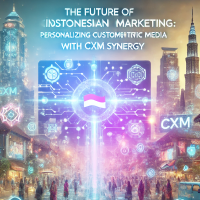
For more than a decade, digital advertising has been plagued by the perennial challenge of measuring true efficacy. That era is over. The rise of Retail Media Networks (RMNs) marks the third wave of digital marketing, an era defined by precision, accountability, and predictive intelligence.
According to eMarketer, RMNs are set to capture over 20% of all digital ad investments, outpacing even social and search in growth velocity. In Southeast Asia alone, GrabAds and Kantar estimate retail media spend could reach USD 4.7 billion by 2030. This trajectory is powered not by hype but by measurable performance, the promise of closed-loop attribution and first-party data that connects media exposure directly to a sale.
As we move into 2026, the opportunity for RMNs lies not just in performance, but in progression, evolving from transactional tools to strategic ecosystems. Drawing insights from MMA’s Retail Media Network Ideas Lab Podcast Series, this article explores the imperatives shaping the next phase of growth. Marketers who master these shifts now will own the future of commerce.
Closing the Loop: Retail Media’s True Advantage
The defining advantage of RMNs lies in their ability to connect advertising investment with actual purchase behavior. As Ken Mandel of GrabAds notes, attribution is the “most important ingredient.” Operating within a retailer’s own ecosystem gives brands a rare gift, visibility into which ad exposures drive real sales.
Unlike traditional web environments where consumer journeys are fragmented, RMNs operate where purchase intent already exists. The result is a cleaner, more measurable path to purchase, driving tangible ROI and ROAS. This transparency is why retail media has become the channel of choice for performance-driven marketers across APAC.
Bridging the ‘Fidget’ Gap: Omnichannel Measurement
The modern shopper is hybrid, moving fluidly between online discovery and offline purchase. According to McKinsey, 41% of consumers buy both online and in-store. This “fidget” (physical + digital) behavior challenges marketers to build omnichannel attribution frameworks that connect every touchpoint.
Retailers and brands are responding by developing partnerships that link programmatic buying data with point-of-sale (POS) systems. These innovations are helping marketers measure online-to-offline conversion, turning a once-fragmented view of the customer into a unified, measurable experience.
Nothing Without AI: The Predictive Engine of Retail Media
As Christine Tan, Head of Commerce for Publicis Asia Pacific, put it on the MMA RMNIL Podcast, “Nothing is without AI.”
AI now powers both the consumer-facing front end and the operational backbone of RMNs. On the front end, AI refines product discovery through personalized recommendations, dynamic pricing, and content optimization. On the back end, it transforms audience targeting, creative sequencing, and bid optimization.
The result: RMNs that don’t just react to consumer behavior, they predict it. AI helps build lookalike audiences, ensures relevance, and converts ads from interruptions into value-adding experiences. When consumers encounter well-targeted messaging at the moment of intent, advertising becomes assistive commerce, intuitive, contextual, and effective.
The Content Ecosystem Trend
In Southeast Asia, the most progressive RMNs are evolving beyond product listings into rich content ecosystems. Platforms such as Shopee, Lazada, and Amazon now integrate video content, livestreaming, and creator partnerships within their retail environments.
These ecosystems blur the boundaries between content, commerce, and community. They encourage brand discovery, increase time spent on platform, and enable full-funnel storytelling within the same environment, from inspiration to purchase. For marketers, this shift expands the role of RMNs beyond conversion engines to brand-building arenas.
The Power of Full-Funnel Integration
Traditionally, RMNs were viewed as lower-funnel channels, focused on immediate sales and GMV. But as the customer journey compresses, brands now recognize the opportunity to engage at every stage, awareness, consideration, and purchase, within a single ecosystem.
By leveraging content integration, AI-driven insights, and first-party data, RMNs are becoming full-funnel platforms. They allow marketers to blend brand storytelling with conversion efficiency, offering measurable impact across every stage of the funnel. This is where the Brand as Performance framework becomes critical, connecting long-term brand equity with short-term sales accountability.
Conclusion
As digital marketing enters its third wave, Retail Media Networks stand at the forefront, delivering verifiable outcomes and predictive insights that redefine the marketing playbook.
The next phase will be shaped by closed-loop measurement, AI-powered personalization, and omnichannel orchestration, but also by how effectively brands reorganize around these principles. For marketers ready to embrace data, technology, and creativity in equal measure, RMNs are not just a media channel, they are the operating system for growth in 2026 and beyond.



















